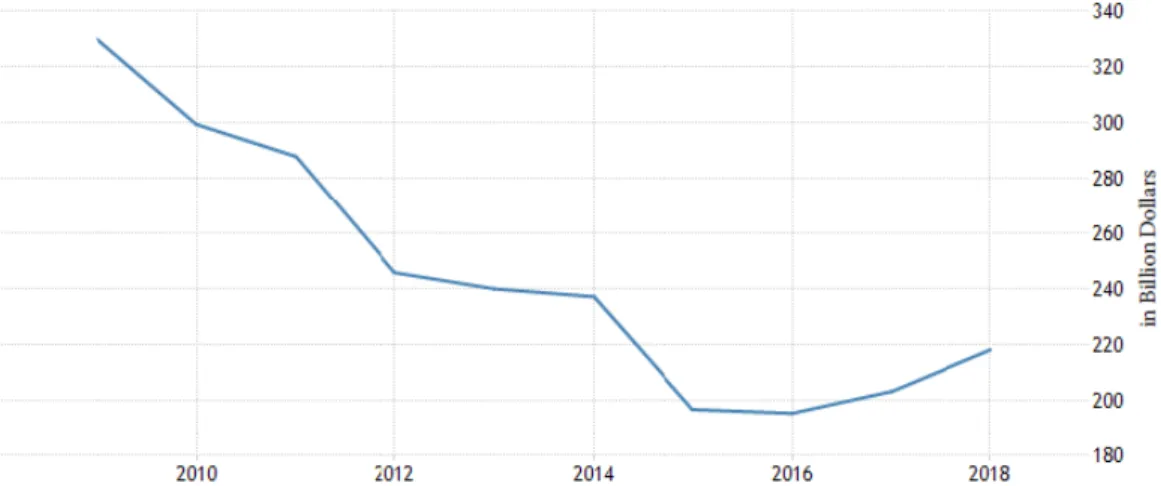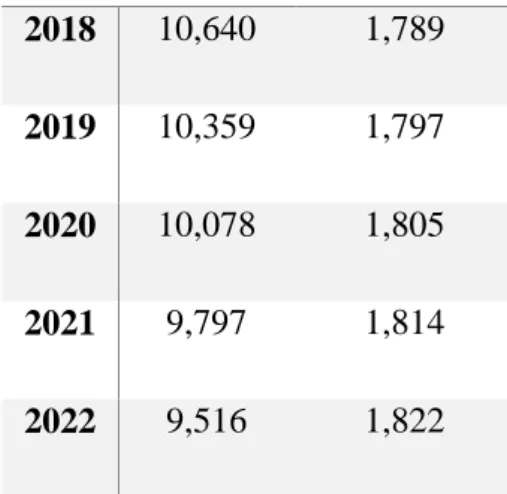More specifically, it will examine the entire process of developing an on-farm dairy processing plant. The complexity of this endeavor requires well-defined governance and funding steps to succeed in today's tight economic climate.
Introduction
Research Objectives
A successful feasibility study must be based on the idea that the business plan is essential to be in harmony with the external economic environment and the general socio-economic condition of the country where it is to be implemented. It is essential to build the study based on a methodological approach that can be extremely valuable in reducing miscalculations and increasing the accuracy of the feasibility study.
Research Method
When conducting a research on one of the many methodologies that can be used by the researcher is the case study. The case study itself will not necessarily remain significant for any additional use and most of the cases contacted have rather limited application.
Literature review
Dairy Processing Plants Feasibility Studies
In addition, they found that a financially successful farm must be an important prerequisite for the viability of the. In their analysis (Shepherd and Wolfe, 2006) examined a locally produced and bottled on-farm dairy facility that assessed market feasibility and the projects financial viability.
Organic and locally dairy products
In addition, the sustainability of organic food supply, sustainable pricing policy, exploitation of market niches and labor costs. Some studies show that customers associate many characteristics of organic products with the same characteristics of locally grown products, such as natural and.
Methodology
Financial Feasibility
- Net Present Value (NPV)
- Internal Rate of Return (IRR)
Criteria that will measure the profitable possibilities of the project used are Net Present Value (NPV) and Internal Rate of Return (IRR) determined here. The net present value (NPV) calculation is used to understand the net input of the investment.
Financial feasibility under uncertainty
- Sensitivity Analysis
- Breakeven Point
Furthermore, the calculated value for the NPV also depends on the length of the cash flow array. After a sensitivity analysis has been conducted on a project, it is a good practice to find out at what level sales or costs could impact the plan's profitability. The breakeven in terms of accounting profit is the sales level at which profit equals the total cost level. Some costs are considered fixed because they are independent of the level of production (Brealey, Myers, and Marcus, 2014).
The break-even point can also be defined in terms of physical units produced, or of the level of capacity utilization at which sales revenue and production costs are equal. Variable costs vary in proportion to the volume of production, the selling prices for a product are constant for all levels of sales over the given period, the sales value is a linear function of the selling prices and the quantity sold. For the interpretation of the results of break-even analysis, a graphical representation is very useful, because from the angle of the cost and sales curves, and the position of the break-even point in relation to the total capacity, potential weaknesses can often be identified. (Durham, Bouma and Meunier-Goddik, 2015).
Dairy products
- Milk and Dairy Products
- Liquid Milk Products
- Fermented dairy products
- Global dairy sector
- European dairy sector
- Greek dairy sector
Milk production is categorized into two different systems that exist in the dairy sector, small farm and large farm production system. Developed regions such as Europe and North America provide 100% of milk to the industry, while Asia, on the other hand, contributed less than 6% of global supplies. The European dairy industry is an important part of the food industry of the Union than elsewhere in the world in terms of share of turnover or value added in production (Tacken, 2009).
The consumption of dairy products in the European market is the highest among other regions because the market is well developed and established. The table in Figure 2-12 provides information on the consumption of the five most important dairy products in the European Union. However, most dairy processors mainly consist of medium to small units in the form of cooperatives and family businesses, which operate on the regional market and specialize in the production of specific dairy products such as cheese or yogurt.

Dairy industry analysis
Macro-economic environment
- Political Environment
- Sociocultural environment
- Technological environment
- Environmental factors
- Legislative environment
In Greece, the strict fiscal policy introduced during the years of the financial crisis and the excessive taxation of companies and consumers played a detrimental role in the development of the dairy sector and the development of new enterprises in this sector. Factors that affect the economic environment are gross domestic product, the level of interest rates, inflation and the level of disposable income. It is generally a measure of the level and strength of customer demand and the likelihood of survival in an industry.
The level of interest rates in a country is an important factor for the expansion and health of the economy. These factors are influenced by gender, age and place of residence; the demographic composition also provides us with valuable information about future trends in population needs. In Greece, the consumption of dairy products is an integral part of the population's diet and is considered one of the basic ingredients in the country's culinary tradition.

Micro Economic Environment
Based on the above, it is concluded that the domestic milk industry is subject to a sufficiently comprehensive and stringent operational framework with regard to hygiene and quality for the benefit of the consumer. Dairy products are an important part of the Greek consumer's diet, as we saw earlier. Milk alternatives are more expensive and until now they share a marginal part of the market.
Examining the bargaining power of suppliers, we note that the dairy industry is extremely dependent on one raw material and today there are no alternative substitutes. Since in our case study the milk processor is also the raw material supplier, bargaining power can be seen as irrelevant. Market structure and the nature of a product determine the bargaining power of customers.
SWOT Analysis
Dairy products have a very limited shelf life, which would significantly increase the dairy's operating costs due to the daily distribution and returns of products. Being able to offer organic dairy products that distinguish themselves on the regional market as authentic and of higher quality. Reduction in the available purchasing power of consumers due to years of economic recession.
The increased concentration in the retail sector, which will certainly reduce the company's bargaining power to put the products on the shelf. Development of organic and locally produced dairy products from the larger companies in the industry, and direct competition with them.
Results
On-Farm Dairy Processing
In table 4, there is an overview of expenses from the production of organic bottled milk and it is divided into two main categories, variable expenses and fixed expenses. Variable costs are milk purchased from the farm, packaging materials and other necessary production materials. In table 5, there is the income statement for local milk production and it is divided into four categories, milk in 1 liter container, milk in 0.5 liter container, flavored milk and butter.
In table 8 you can find the cost statement from the production of organic yogurt and it is divided into two main categories, variable costs and fixed costs. Variable costs are organic milk obtained from the farm, packaging and other materials required for production. In table 10 you can find the cost statement of local yogurt production and it is divided into two main categories, variable costs and fixed costs.

Financial Analysis
- Net Present Value
- Internal Rate of Return
- Sensitivity Analysis
- Breakeven analysis
For the organic milk bottling project, the IRR was found to be 0.57 or 57% with the initial investment of €400,000, this project should be accepted according to its IRR. The prices of organic milk vary from -10% to 10%, and so do the income prices, so the sensitivity analysis is performed for the organic milk company. Milk prices change from -10% to 10%, and so do income prices, so the sensitivity analysis is performed for the locally produced milk business.
Milk prices change from -10% to 10% and the same is happening with revenue prices, so sensitivity analysis is done for organic yogurt business. Milk prices vary from -10% to 10% and the same is happening with revenue prices, so sensitivity analysis is done for the domestically produced yogurt business. The formula used for the calculations is the break-even point = total fixed costs / variable contribution of each unit.

Conclusion
A review of consumer perceptions and behavior toward the price of organic food', Journal of Consumer Affairs, 51(1), p. 2007) 'A Cost and Return Evaluation of Alternative Dairy Products to Determine the Capital Investment and Operational Feasibility of a Small-Scale Dairy Processing Facility', Journal of Dairy Science, 90(5), p. 1991) Manual for the Preparation of Industrial Feasibility Studies. The case of European Union countries', Journal of Dairy Science, 97(10), p. 2017) 'Consumer perceptions of 3 different fermented milk products: Insights from focus groups, word association and projective mapping', Journal of Dairy Science. American Dairy Science Association, 100(11), p. 2014) 'Consumer preferences for organically and locally produced apples', Food Quality and Preference.
2014) 'Twenty Years of Country-of-Origin Food Labeling Research', Journal of Macromarketing, 34(4), p. 2007) 'Dairy value added financial performance. 2016) 'Transforming the dairy industry towards sustainability: The case of organic dairy industries in the Netherlands and Thailand', Environmental Development, 17, p. 2006) Performance measurement in the agri-food supply chain. networks, Quantification of the agri-food supply chain. 2017) 'What qualitative research can do for you: deriving solutions and interventions from qualitative findings', Journal of Emergency Nursing, 43(5), p. 2016) 'Consumer preferences for fresh broccoli: interactive effects between country of origin and organic labels', Agricultural Economics, 47(2), pp.